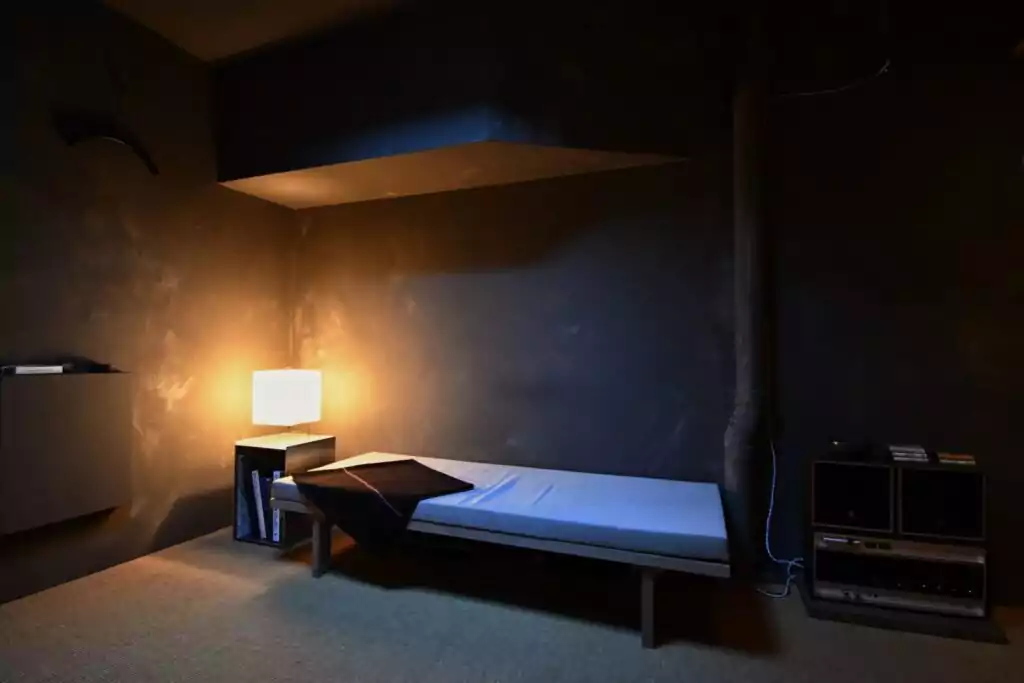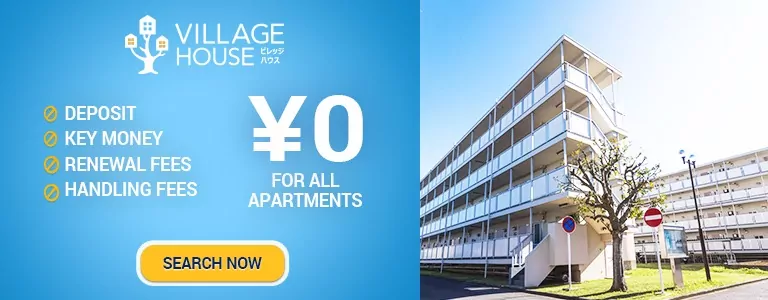How do you determine how long it takes to walk from the apartment?
In the real estate industry, the rule for calculating the time required is “1 minute on foot = 80 meters on the road. Fractions of 80m or less are not rounded down to the nearest minute. Therefore, even if a property is located right next to a station, it cannot be described as a “0-minute walk to the station. In other words, a property with a “10-minute walk to the station” means that the road distance to the station is 721 to 800 meters!
*Note that slopes are not taken into account.

What is the difference between apartments and condominiums?
Generally, a wooden housing complex up to two stories high is called an apartment. On the other hand, mid- to high-rise residences constructed of reinforced concrete or steel-framed reinforced concrete and three or more stories high are often referred to as condominiums.

What are “K,” “DK,” and “LDK” often seen in floor plans?
K: Kitchen DK: Dining Kitchen LDK: Living/Dining/Kitchen
Simply put, it indicates the size of the room where the kitchen is located and for which purpose it can be used; K, DK, and LDK are larger in that order.
The point is that LDK is not necessarily a larger room. Since the size of other rooms is not indicated, 2DK may be larger than 2LDK. It is where you should focus, but we recommend that you consider the size of the rooms other than the room where the kitchen is located, and consider changing the conditions.

A unit bath is not only a bath and toilet together.
A unit bath refers to a type of bath where the necessary parts for a bathroom are made as a set at a factory and assembled at the site where the house is built. Since all bathrooms with integrated walls, ceiling, floor, and bathtub are unit baths, some have the bath and toilet together, while others have them separately.
If you want to avoid having a bathroom and toilet together, choose a property with separate bathroom and toilet instead of avoiding a “unit bath!

What are a guarantor and a rent guarantee company?
In order to rent an apartment, it is common to have a “joint guarantor” who is responsible for paying the rent in the event that the tenant is unable to pay it.
Recently, “rent guarantee companies” have become a major service that allows you to pay money to take the place of a joint guarantor.
In addition to cases where there is no joint guarantor, there are also cases where both a rent guarantee company and a joint guarantor are required, so be sure to confirm this when you sign the contract.

Village House does not use a rent guarantee company, so there is no need to pay any guarantee fees. A joint guarantor is also basically unnecessary. However, there are cases in which a joint guarantor may be required as a result of an examination.
What is a security deposit, key money, and broker’s commission?
A security deposit is money that is deposited in advance to cover the cost of repairing damages to the room or to cover the obligation in the event of nonpayment of rent during the contract period. When you vacate the room, the deposit is refunded after offsetting any delinquent debts. The refund method differs depending on the management company, so you need to confirm the refund method.

Key money is one of the lump-sum payments (i.e., a one-time payment at the time of signing the contract) made by the tenant to the lessor at the time of the lease contract, and is given to the lessor as a way of thanking him or her for renting the room. Key money is non-refundable.
Brokerage fee is a commission paid to a real estate company (brokerage firm) when buying, selling, or renting a house. *Commissions differ depending on the real estate agency, so confirmation is required.
Village House is a landlord and management company, so there is no brokerage fee.
Deposit and key money are also basically waived. (Corporate contracts require 2 months’ security deposit, and even individual contracts may require a security deposit as a result of screening.)
Related articles:
- Top 5 Issues When Moving and How to Deal with Them
- Moving Checklist: Everything You Need to Prepare for Your Move and a Great Start in Your New Home
- Procedures You Shouldn’t Forget After Moving!
- The Quintessential Moving Day Guide
- How To Save Money When Moving



